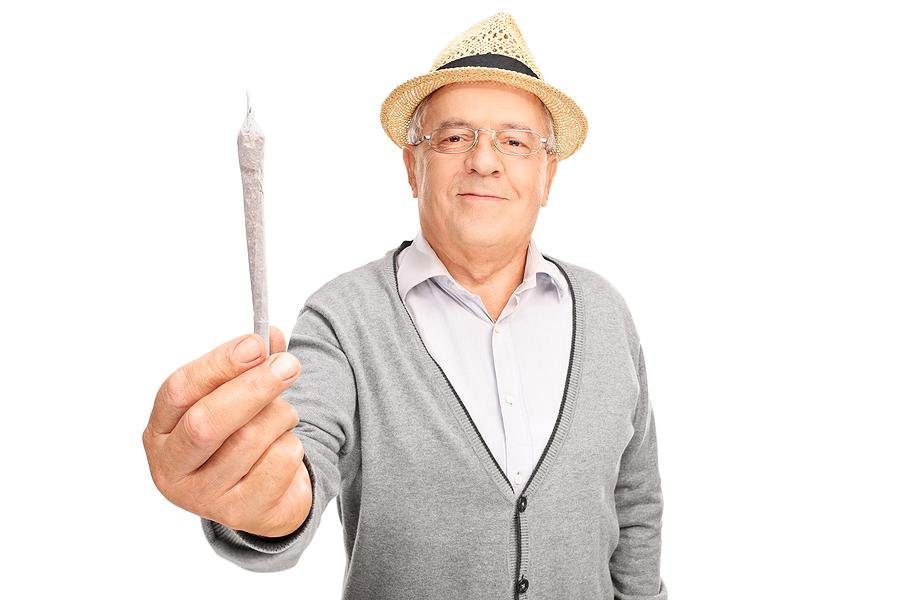Who knew? It is the senior population that is driving the culture change, which has led to a multiplicity of medical cannabis dispensaries.
They may be baby boomers, who have reverted to old habits from the 1960s or 1970s. Perhaps they are more informed about medical cannabis and its benefits. Senior citizens are a huge and active market.
Medical cannabis: A complete guide for Senior Citizens
What is medical marijuana?
The medical marijuana comes in many different forms. They are derivatives from the cannabis plant, but they all contain a lot of CBD. It has little or no presence of THC (∆9- tetrahydrocannabinol), the cannabinoid that creates mind-altering, psychoactive effects.
This is only two out of about 100 chemical compounds that are cannabinoids. They map to the human Endocannabinoid System (ECS), an extensive and complex neurologic system present in the entire human body and brain.
Does medical marijuana have legal status?
According to the Drug Enforcement Agency, cannabis is a Schedule I substance. This means that it has a “high potential for abuse” and no accepted medical uses. Other drugs in Schedule 1 include “heroin, lysergic acid diethylamide (LSD), marijuana (cannabis), 3,4-methylenedioxymethamphetamine (ecstasy), methaqualone, and peyote.”
“There are not enough trials that have proven the medical value of cannabis” (Aging.com).
In 30 states, including the District of Columbia, voters have approved medical equipment to be grown, sold, or owned. In some states, sales are restricted to CBD derivatives used for the treatment of pediatric epilepsy. Still, the majority of states has approved medical cannabis dispensaries that are fully operational.
What does it have to offer?
• Glaucoma is a common condition among aging people, the leading cause of blindness among senior citizens. A fluid buildup behind the eyes can cause the optic nerve to be damaged. Glaucoma patients have used marijuana for years as a treatment.
According to the American Glaucoma Society, smoking marijuana reduces IOP. [Interocular Pressure) in both normal individuals and in those with glaucoma, and therefore might be a treatment for glaucoma.” The American Academy of Ophthalmology says, “Studies conducted then showed that smoking marijuana lowered the IOP of people with glaucoma. Both warn that the beneficial effects only last a few hours. Still, cannabis derivatives like edibles and candies multiply, and glaucoma patients have ways to treat glaucoma with some regularity and discretion.
• Chronic pain afflicts seniors and increases with aging. Arthritis and other autoimmune conditions cause joint, spine, and body pain. They treat them with over-the-counter pills, rubs, and lotions. They treat pain with prescribed medications, including opioids. They also seek relief with chiropractic care, massage, and acupuncture.
According to AARP, “older adults report misuse of painkillers more than any other type of prescription drug. Over 40 percent of older adults have chronic pain that is often treated with opioids, sometimes for long periods. Though the health effects of long-term opioid use among older adults need to be studied further, opioid use among older adults may increase the risk for falls, delirium, fractures, pneumonia, and all-cause mortality.”
Medical marijuana, however, has proven and acknowledged anti-inflammatory properties. Whether smoked, eaten, or applied as a transdermal treatment, medical cannabis connects with the ECS to relieve intense and chronic pain — without fear of addiction.
• Alzheimer’s Disease has some connection with plaque building among the brain’s cells. This oversimplifies this little-understood condition. But, brain scans and autopsies show this buildup among victims. The research seeks to identify the origin and mechanism of the brain’s function when clouded with this plaque.
The Pharmaceutical Journal reports, “The resulting damage can be divided into three categories: the formation of amyloid plaques, the generation of neurofibrillary tangles, and cell death, consistent with the amyloid cascade hypothesis.” The lack of research occasioned by DEA controls has kept science from making a definitive connection between cannabis and Alzheimer’s disease and similar degenerative conditions. Still, limited research has shown the positive effects of cannabis on the reduction of amyloid plaque, repair of neuro-tangles, and reduction of cell death. It’s too early to confirm, but many patients claim they benefit from cannabis’ neurodegenerative properties.
• Cancer is a growing fear among senior citizens as they observe their friends and family fall victim. But medical cannabis offers two benefits. First, cannabis has a demonstrated anti-emetic benefit to reduce the nausea and vomiting attached to chemotherapy. Even the FDA has approved using Marinol and Cesamet to fight nausea.
Second, recent research shows encouraging results suggesting that cannabinoids reduce the size of some cancer tumors and reduce their ability to metastasize. Scientific American reports, “We’re not there yet, but while the available data are limited, research on antitumor effects of cannabinoids so far shows great promise. The International Journal of Oncology published a study last year [2017] A recent preclinical study also found that cancer cells derived from patient blood samples were differentially sensitive to the two main active compounds in cannabis–tetrahydrocannabinol (THC) and tetrahydrocannabinol acid (THCA).” An early preclinical study we recently conducted also found that cancer cells derived from patient blood samples were differentially sensitive to the two main active compounds in cannabis—tetrahydrocannabinol (THC) and tetrahydrocannabinol acid (THCA).” “Although the FDA warns not to take these claims too seriously at the moment, the scientific community continues its research, particularly in the area of breast cancer treatment.
Why do older people like to use medical cannabis?
- Another relief: medical cannabis seems to improve sleep and appetite problems that are common in seniors. The THC may enhance brain and cognitive functions, while others enjoy the high that the cannabis product provides.
- Selected strains are available for seniors who do not smoke and have no objections. Many of these strains were created to address physical and mental maladies. You can also choose from sublingual oils and topicals. They’ll find cookies, teas and beverages. They can self-medicate and distribute dosages, while caregivers are able to administer the medication in a disciplined manner.
- Taxation may make the prices at dispensaries seem expensive. Cannabis derivatives are often cheaper than prescribed medication.
- The elderly will do anything to get relief. Some people want it for the pleasure of its side effects. Certain medical products are infused with enough THC that they produce a slight buzz. The products provide enough pain relief for a pleasant sedation.
In their last years, few seniors are potheads. However, many of them use cannabis with friends who live in senior centers or retirement homes. The cannabis helps them with their card and shuffleboard games but, more importantly, provides relief and rest.




